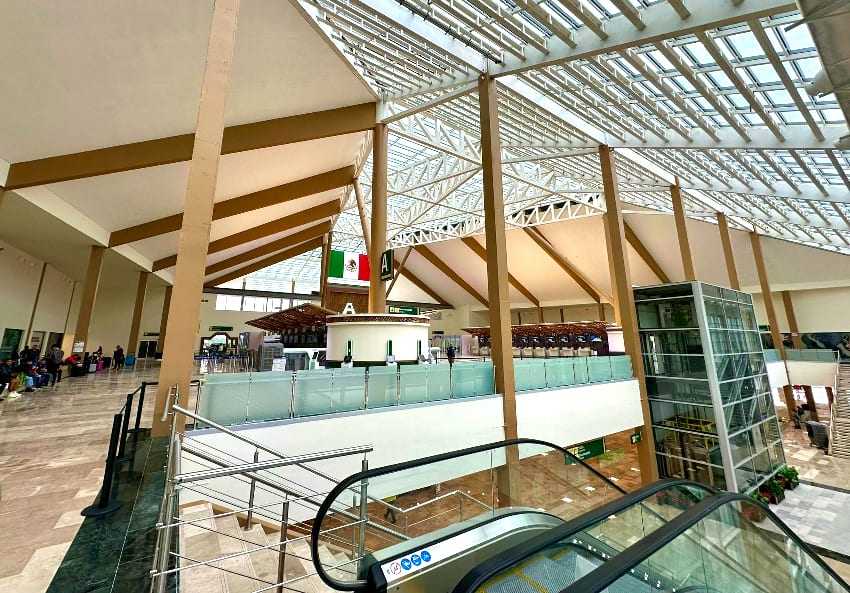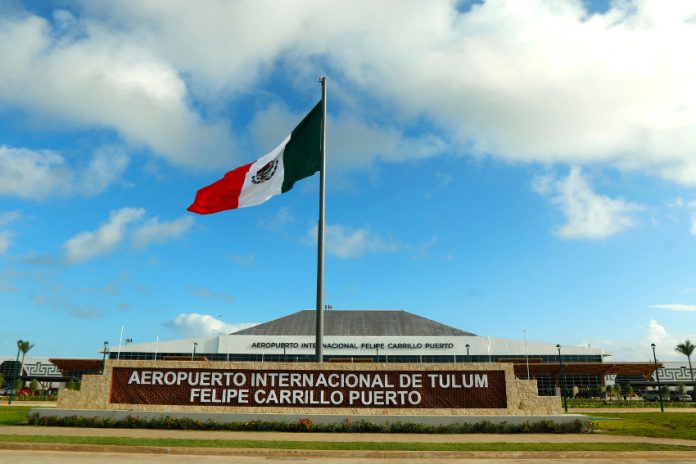I have been following the progress of the Tulum airport for a long time.
I remember when it first was proposed over a decade ago; the excitement was tangible even back then. But after that initial burst of interest, it was shelved like many other large infrastructure projects have been. “Maybe in the next administration,” people said. But the next administration had no interest in the project either.
When President López Obrador said the Tulum airport would be one of his signature projects, this was understandably met with skepticism.
“If not then, why now?”
“Cancún keeps getting more and more flights, Tulum just doesn’t make sense.”
“The Maya train and a new airport at the same time? That is never going to happen.”

But here we are today, with a freshly opened Tulum airport. I was visiting the area shortly after its inauguration, and couldn’t resist taking a trip there to check it out for myself.
I’ve written down my 10 initial thoughts and observations to share.
- The airport is close to Tulum, but not as close as you would expect. It took us just under 40 minutes to get from Tulum’s downtown to the new airport. The airport’s location is south on the #307 highway (in the opposite direction of Playa del Carmen and Cancún) and then a bit inland. Given that there is very little but jungle in that direction, it surprised me that the location wasn’t closer.
- From the moment you exit off of the highway onto the airport access road, it’s nearly impossible to avoid being impressed. I have been in many parts of Mexico, and it’s rare to see infrastructure like this. There is a sign that reads “Tulum International Airport – the airport in the jungle” and a massive Mexican flag, then when you turn onto the airport access road, it is another 10 km to reach the airport, on a four to six-lane highway cut directly through the jungle. The road is still under construction, but is one of the best stretches of highway I have ever seen in Mexico. Every kilometer or so there is an aerial wildlife bridge. I’m not sure if any animals actually use those things, but it’s impressive nonetheless.
- When you get close to the airport, you go over a large bridge where the Maya Train runs under the highway and connects with the airport. When we drove by the train tracks, there was an incredible amount of construction activity. Dozens of trucks were in line to drop off materials and dozens of other heavy pieces of machinery were working. It had a different feel than many construction sites I have seen. Perhaps it is because the work is being supervised and run by the Mexican Army Corps of Engineers, there is a definite military sense of organization and urgency to the operation.
- Arrival at the airport is truly a jaw-dropping experience. Here you are, in the middle of the jungle, and there’s this massive airport. It was much bigger than I expected, despite having seen pictures, and gives a very good first impression. Given the speed with which it was constructed (about 18 months), it might not win any design or architectural awards, but it struck me as highly functional and practical.
- Final touch-up work was still being done at the airport. I spoke with a young woman engineer working on the site who was from Oaxaca. She told me that when she arrived here a year ago, “there was nothing here.” There was a sense of immense pride in her voice as she told me about her work over the past year and how everything has come together in the past few weeks. I asked her if she saw the president during his recent visit, but she told me that she was too busy working.
- Airlines have embraced the new airport with gusto – first the Mexican airlines, then Delta, American, United, Spirit, and Jet Blue from the United States, and most recently, Air Canada. I would think that even the biggest skeptics are surprised at how fast flights have been added to major cities throughout North America – 19 cities will have direct flights, and counting!
- This project is built with the future in mind. It’s huge. It’s bold. It’s ambitious. It’s hard not to think big when you seen the scale of it all. The airport will create a lot of good direct and indirect jobs in a part of the country where good jobs are not easy to find. I spoke with two young women military security officers, both from the area, who were working at the airport. They were beaming with smiles, dressed in sharp uniforms, clearly filled with pride to be a part of something so significant.
- The contrast between the new airport infrastructure and the city of Tulum’s increasingly over-stressed and inadequate infrastructure is impossible to ignore. The city is going to have to finally get serious about this issue very quickly.
- Recently the news came out that the Mexican government has approved funding for feasibility studies on two potential new airports in other parts of the country, both also near major tourist areas, in Ensenada and San Miguel de Allende. I would think that these airports will be looked at differently and maybe more positively than they would have just two years ago, given what I anticipate to be the positive impact of the Tulum airport.
- Mexico, despite being a huge destination for tourists from around the world, is still largely unknown outside of a few major tourist spots. There is massive potential for such a large and diverse country to receive significantly higher numbers of tourists. I have always said as I have traveled around the world that Mexico can hold its own with any other country. As my wife and I would often say, only half jokingly, “this place reminds us of Mexico, but with worse food, less friendly people, and worse weather!”
I cannot help but think that the Tulum airport will inspire many others in both the public and private sectors to think bigger and bolder for other parts of the country.
The massive potential economic impact of increased tourism in the country if made more accessible is too big not to, and this project serves as an example of the possibilities the future could hold.
Travis Bembenek is the CEO of Mexico News Daily and has been living, working or playing in Mexico for over 27 years.
